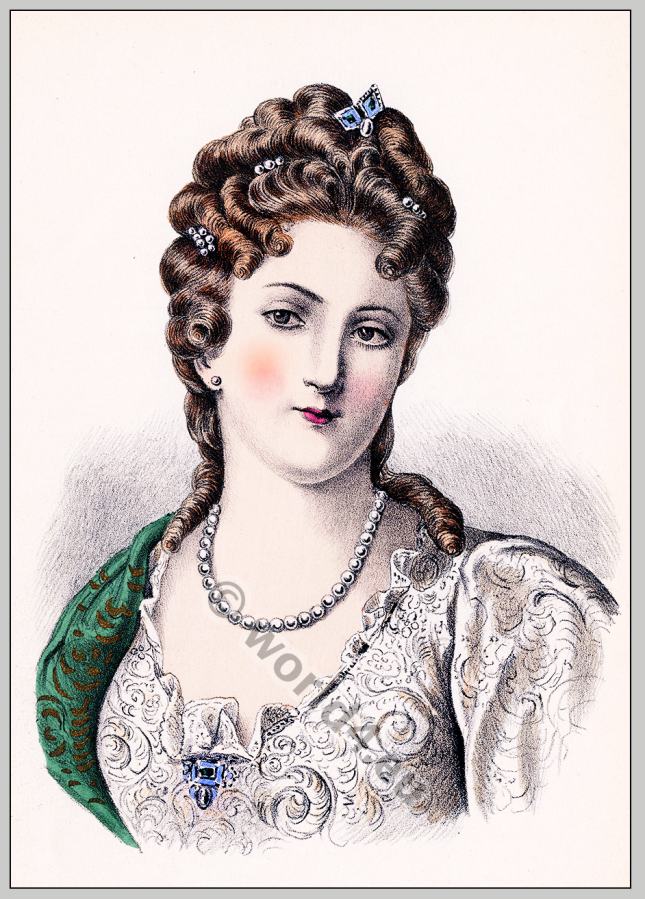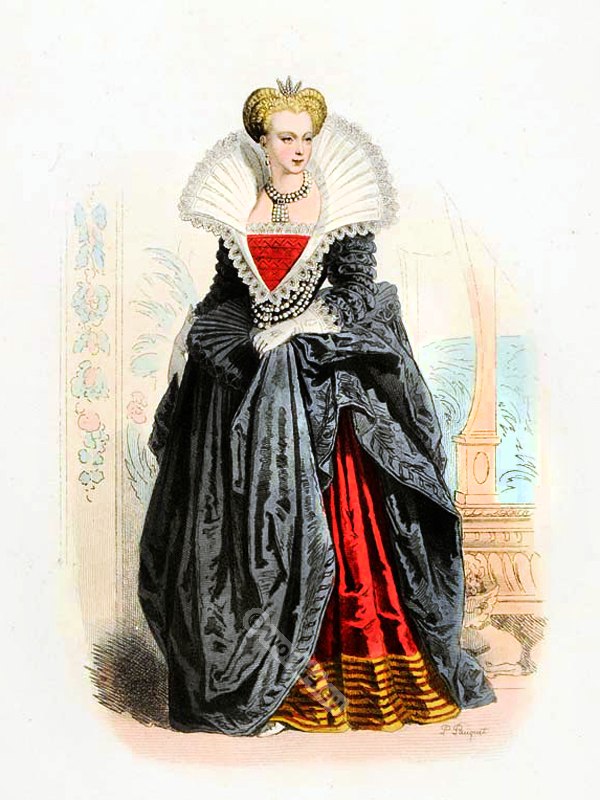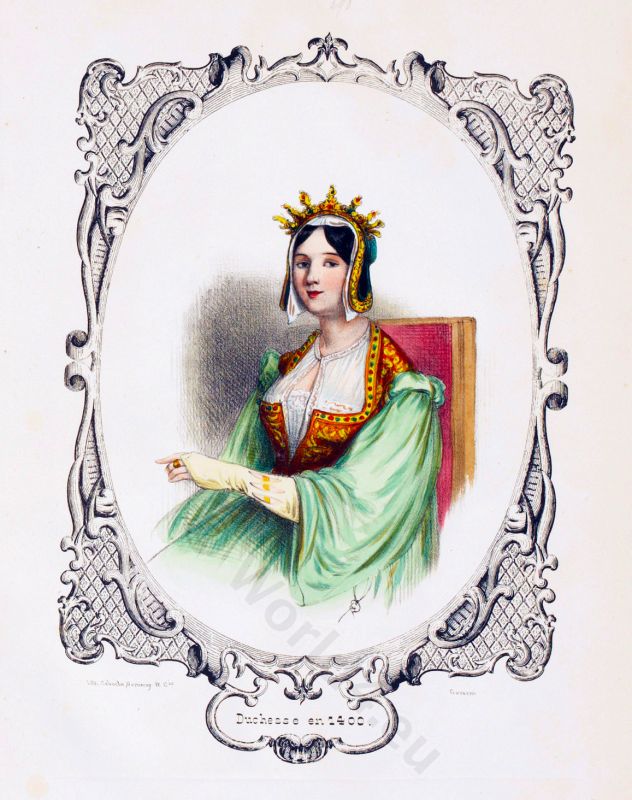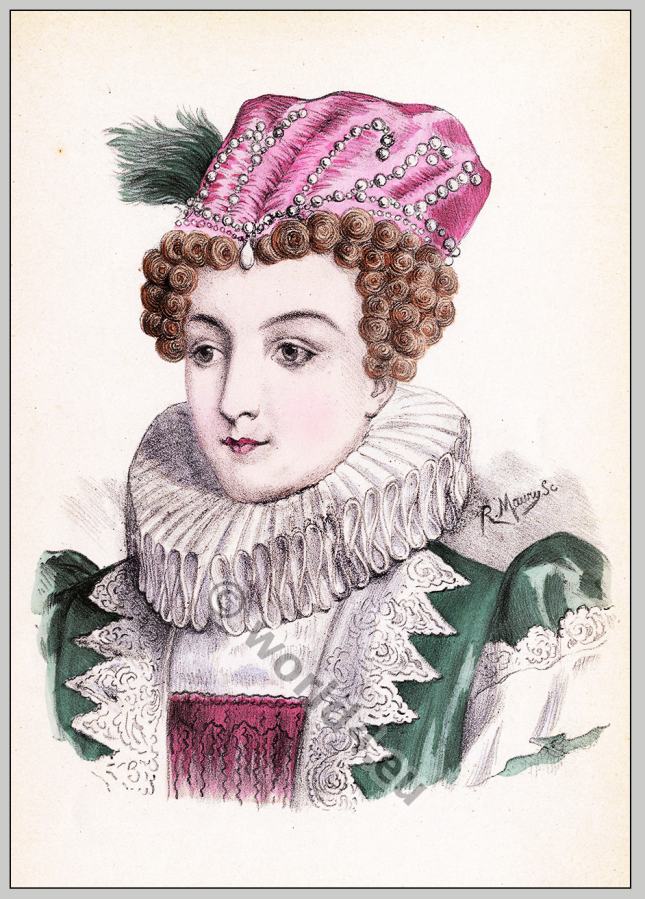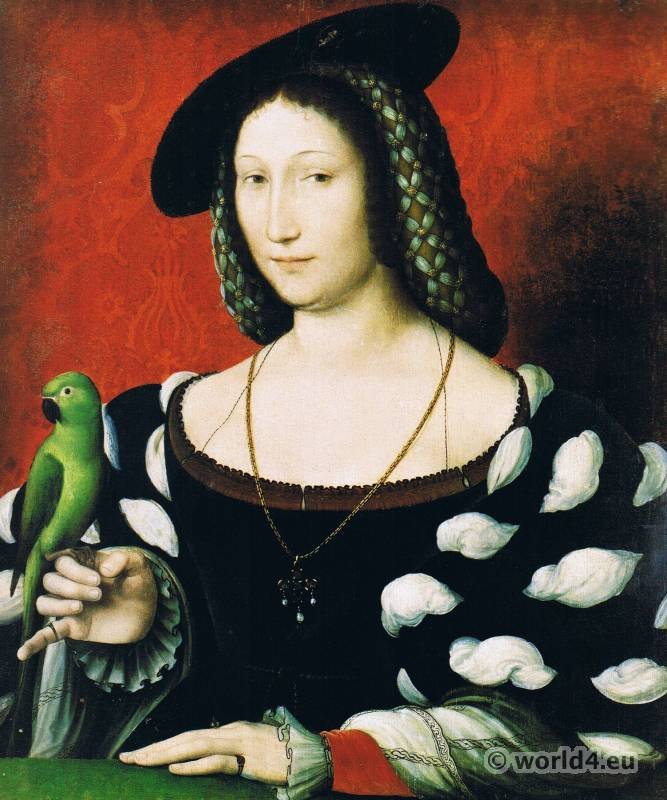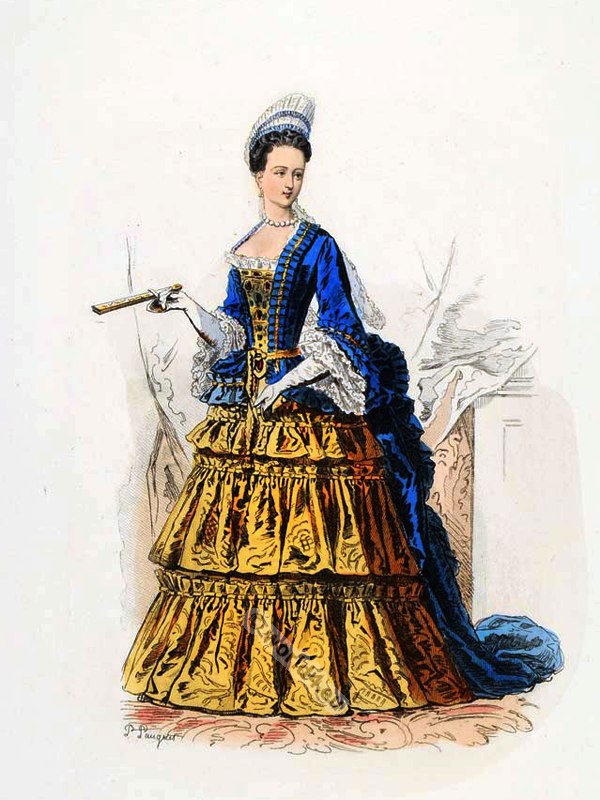Madame de Savoïe
Marguerite de Valois-Angoulême, duchesse de Berry (1523–1574)
Black pencil and red chalk.
Marguerite de France, the fourth daughter of King Francis I of France and Claude, Duchess of Brittany, was born in Saint-Germain-en-Laye on 5 June 1523 and married the Duke of Savoy, Philibert-Emmanuel, on 9 July 1559. The princess did not know her mother, who died a few months after her birth. She grew up under the influence of her aunt and godmother, Queen Marguerite of Navarre.
Her brother Henri II died in a tournoidonné on the occasion of the wedding. On 30 June 1559, King Henri II had been mortally wounded by a spear against the Sire de Montgommery, captain of his Scottish Guard, during the great tournament he had organised in Paris, in the rue Saint-Antoine, in honour of his sister Marguerite’s marriage to the Duke Emmanuel-Philibert of Savoy. Transported to the Hôtel des Tournelles, the king was on the verge of death. But still conscious, he insisted that the ceremony take place without delay, for fear that the marriage would be annulled. The wedding mass, presided over by the Cardinal of Lorraine, took place in the middle of the night, in the Church of St Paul, on 9 July 1559, amid tears. Vieilleville recounts in his memoirs that “the aforementioned nuptials were more like a funeral than anything else: for instead of haultbois and other festivities, there was nothing but weeping, sobbing, sadness and regret…”. Like all the princesses of her House, Marguerite, grief-stricken by the death of her brother, wore the traditional white mourning dress.
At the French court, she befriended her sister-in-law Catherine de Médicis. Following in the footsteps of Marguerite de Navarre, both princesses wrote short stories. Despite numerous offers, Marguerite was not married until the age of thirty-six. For a 16th-century princess, this was a very late marriage (a few days before her own wedding, her nieces Elisabeth and Claude were married, the former aged 14 to the King of Spain, the latter aged 12 to the Duke of Lorraine).
She has held the title of Duchess of Berry since 21 December 1549, when she succeeded her aunt Marguerite d’Angoulême. She then became Duchess of Savoy on 10 July 1559, through her marriage to Duke Emmanuel-Philibert of Savoy, a first cousin of her father, King François I. She was the mother of Charles-Emmanuel I of Savoy, born on 12 January 1562 at the Château de Rivoli.
She showed sympathy for the followers of the Protestant Reformation. After her marriage, she played a key role in the restitution of the last occupied territories that the French were to evacuate in the States of Savoy, under the terms of the Treaty of Cateau-Cambrésis 1559. She acted as intermediary between her sister-in-law, the regent of the Kingdom of France, Catherine de Médicis, and her husband, the Duke of Savoy. She was also involved in negotiations for the return of the last French strongholds in Italy.
The princess, one of the most artistic of the court, lived in Turin, surrounded by her maids of honour, scholars and poets, for the rest of her life. The former palace of the archbishop of Turin, now transformed into a ducal palace, was home to the Savoy court. When she died on 15 September 1574 at the age of 51, she was mourned by the people of Savoy, Nice and Turin. Her remains rest in the apse of the church of the Abbey of San Michele della Chiusa, today better known as Sacra di San Michele, Sant’Ambrogio di Torino. The monastery inspired the writer Umberto Eco for his historical novel The Name of the Rose.
The Musée Condé has six portraits of this princess at different ages (Crayons français du Musée Condé, plates XI and XVIII to XXII). They all predate this one. Is the princess in mourning for her brother? Her apparently older age seems to contradict this hypothesis. We would date this image more readily to around 1565 or 1570.
The British Museum has a replica of this original. Apparently, there is also a painting reproducing it in Turin.
Source: Le Portrait à la cour des Valois; crayons français du XVIe siècle, conservés au Musée Condé à Chantilly: by Etienne Moreau-Nélaton (1859-1927); Musée Condé. Paris, Librairie centrale des beaux-arts, 1908.
Madame de Savoïe
Crayon noir et sanguine.
C’est Marguerite de France, quatrième fille de François et de la reine Claude, née à Saint-Germain-en-Laye le 5 juin 1523 et mariée au duc de Savoie, Philibert-Emmanuel, le 9 juillet 1559. Son frère Henri II trouval a mort dans un tournoidonné à l’occasion dece mariage. La princesse, une des plus artistes de la cour, vécut à Turin, entourée de savants et de poètes. Elle mourut le 4 septembre 1574.
Le Musée Condé possède six portraits de cette princesse à différents âges (Crayons français du Musée Condé, planches XI et XVIII à XXII). Ils sont tous antérieurs à celui-ci. La princesse porte-t-elle ici le deuil de son frère? Son âge, en apparence plus avancé, contredit, semble-t-il, cette hypothèse. On daterait plus volontiers cette image de 1565 ou 1570 environ.
Le Bristish Muséum possède une réplique de cet original. Il existe aussi, paraît-il, à Turin, une peinture le reproduisant.


